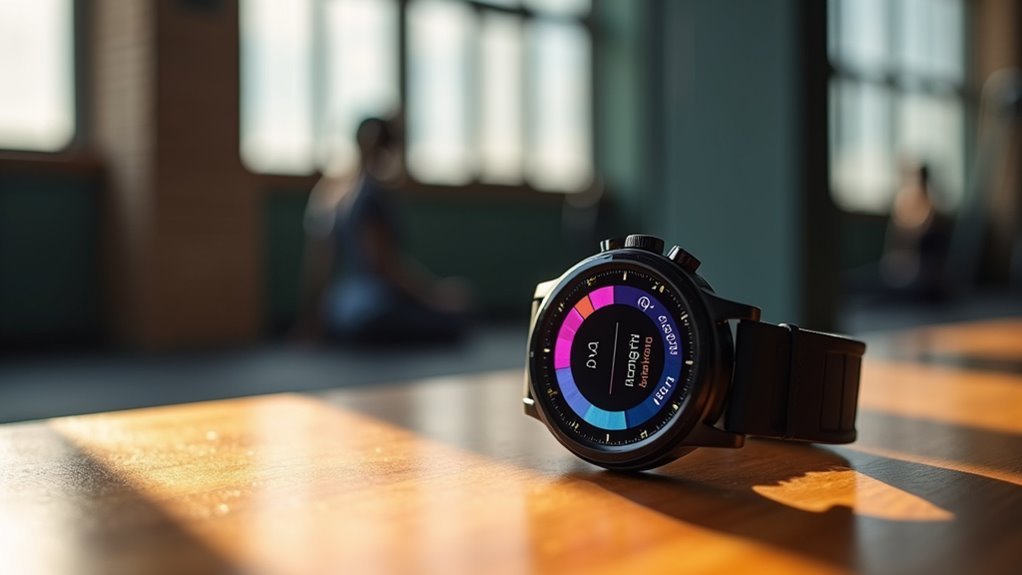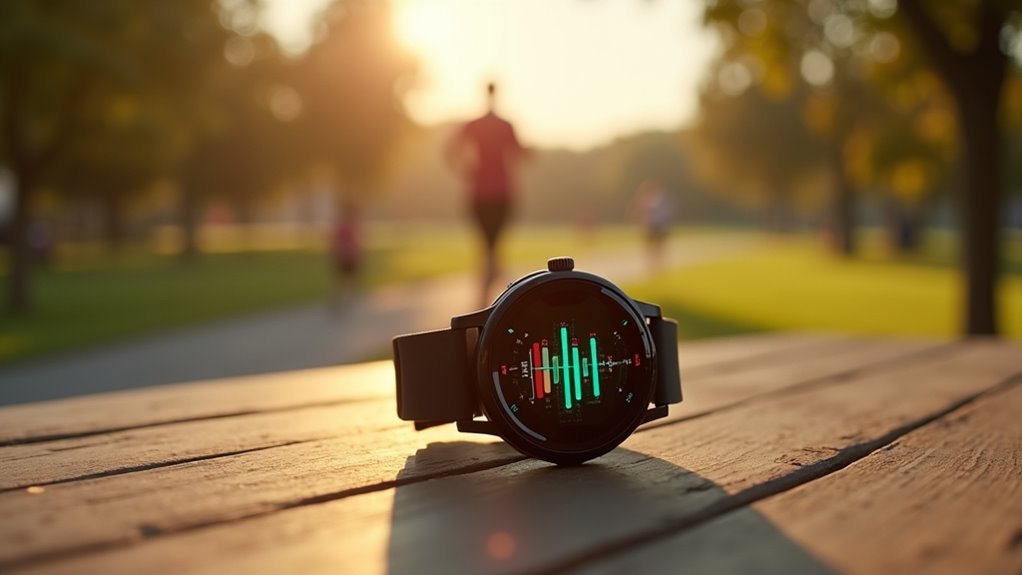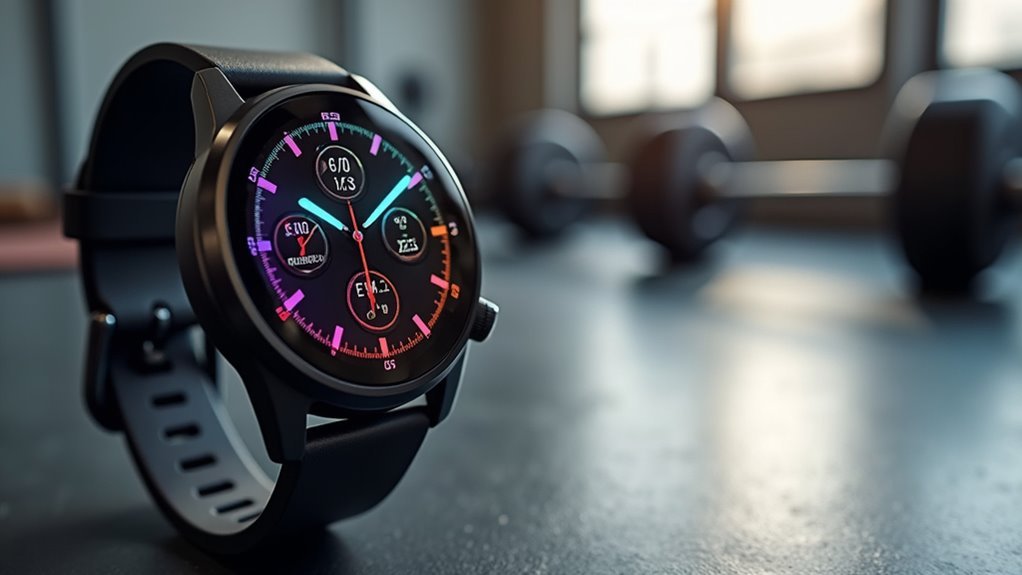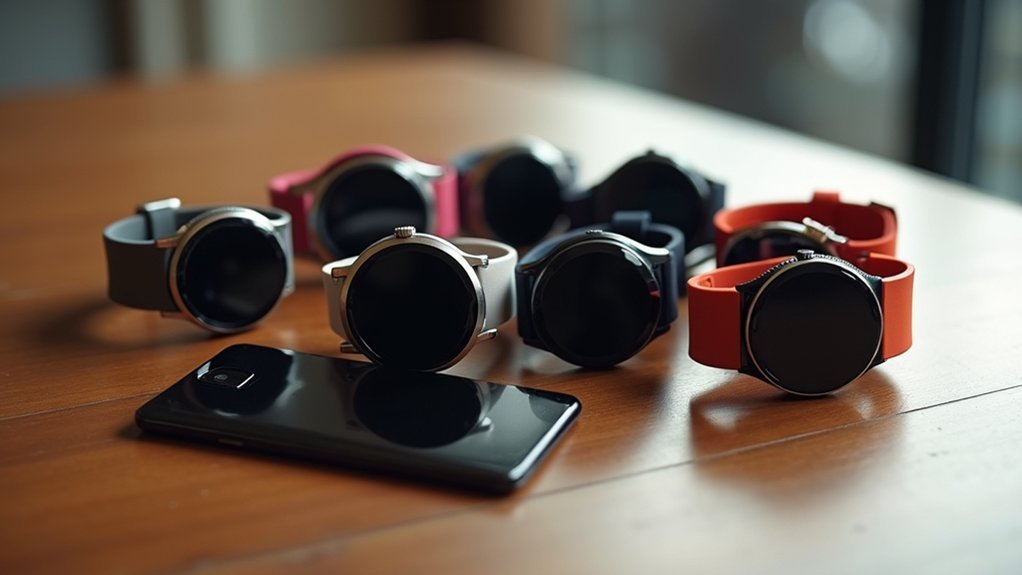Body Battery technology on Garmin watches continuously measures your energy reserves by analyzing heart rate variability, stress levels, and sleep quality to show when you’re ready for intense training or need recovery. You’ll see scores from 5-100, with high levels (76-100) indicating readiness for tough workouts, while low scores suggest prioritizing rest. The real-time data helps you optimize training schedules, prevent overtraining, and maximize performance gains through smarter recovery decisions.
How Body Battery Technology Measures Your Energy Reserves

Everyone knows the frustration of starting a workout only to feel completely drained within minutes, but Body Battery technology in modern smartwatches aims to prevent this scenario by continuously measuring your energy reserves throughout the day.
This innovative feature analyzes your heart rate variability to assess how well you’re adapting to stress and recovering from activities. It integrates multiple data points including your stress levels, physical activity intensity, and sleep quality to calculate a thorough energy score.
When your heart shows high variability between beats, you’re typically handling stress well and have good energy reserves.
Poor sleep or elevated stress quickly drains your battery, while quality rest and relaxation help recharge it, giving you real-time insights into your readiness. The system requires consistent device wear throughout both day and night to provide the most accurate energy measurements and trend analysis.
Understanding Body Battery Levels and What They Mean for Athletes
While your Body Battery score provides valuable data, understanding what those numbers actually mean can transform how you approach your training regimen.
When you’re operating at high levels (76-100), you’ve got the energy reserves for intense training sessions. Medium levels (51-75) signal it’s time to maintain moderate training intensity without pushing too hard. Low scores (26-50) indicate you should focus on lighter activities or rest to prevent overtraining. Very low levels (5-25) demand complete recovery.
You’ll optimize performance by scheduling demanding workouts when your Body Battery peaks and incorporating strategic rest days when levels drop. This data-driven approach helps you avoid burnout while maximizing training effectiveness. The tracking starts at midnight and runs for a complete 24-hour period to give you comprehensive daily insights.
Key Factors That Impact Your Daily Energy Fluctuations

Since your Body Battery reading reflects multiple interconnected systems working simultaneously, understanding the key factors that drive your daily energy fluctuations becomes essential for enhancing performance. Your energy levels constantly shift based on physical demands, recovery quality, and lifestyle choices that either drain or replenish your reserves.
| Factor Category | Energy Drains | Energy Boosters |
|---|---|---|
| Physical Activity | High-intensity training, long exercise sessions | Proper recovery periods, moderate activity |
| Recovery Patterns | Poor sleep quality, insufficient rest | Adequate sleep, stress management |
| Nutrition & Lifestyle | Inadequate energy intake, dehydration | Proper meal timing, effective hydration |
Your body battery fluctuates based on how well you balance these competing demands while supporting your physiological needs. Athletes experiencing low energy availability face reduced recovery capacity, muscle mass deterioration, and impaired neuromuscular function that directly impacts their body’s energy restoration processes.
Optimizing Training Schedules Using Body Battery Data
Armed with knowledge of what drives your energy ups and downs, you can now leverage your Body Battery readings to make smarter training decisions.
When your morning Body Battery shows high levels, you can confidently tackle intense workouts. Low readings signal it’s time to prioritize rest or stick to gentle, low-intensity sessions.
Check your Body Battery multiple times throughout the day to make real-time adjustments to your planned workouts. If your energy drops considerably during the day, scale back your evening training intensity.
Look at weekly Body Battery trends alongside your average levels over several days. This broader view helps you detect cumulative fatigue and adjust your training load accordingly, preventing overtraining while maximizing performance gains. Remember that Body Battery stress levels provide valuable insights that can help you manage daily stress and avoid burnout during your training cycles.
Garmin Watch Features That Enhance Recovery Tracking
Beyond basic energy monitoring, Garmin watches pack sophisticated recovery tracking features that transform how you understand your body’s readiness to perform. Your watch continuously analyzes heart rate variability patterns to assess autonomic nervous system balance, revealing how stress impacts your recovery state.
The integration goes deeper than energy alone—you’ll see correlations between sleep quality, training load, and Body Battery levels displayed together for thorough context.
Real-time alerts guide your daily decisions, recommending when to push harder or prioritize rest. The Garmin Connect app provides historical trends that help you identify overtraining patterns before they derail your progress.
You’ll discover how non-exercise stressors affect your recovery capacity, enabling lifestyle adjustments that maintain higher energy reserves and optimize your training rhythm. Recovery Time appears prominently on your watch face for immediate reference, making it effortless to check your readiness status throughout the day.
Frequently Asked Questions
Can I Use Body Battery if I Have an Irregular Sleep Schedule?
You can still use Body Battery with irregular sleep, but you’ll need to adjust your expectations. Wear your watch consistently at night and focus on long-term trends rather than daily readings.
Does Alcohol Consumption Affect My Body Battery Readings the Next Day?
Alcohol consumption definitely affects your Body Battery readings the next day. It disrupts sleep quality, increases heart rate, reduces heart rate variability, and interferes with recovery processes, resulting in lower readings.
How Long Does It Take for Body Battery to Become Accurate?
You’ll see initial accuracy after one day of continuous wear, but your Body Battery won’t become truly personalized and reliable until you’ve worn it consistently for several weeks straight.
Will Medications or Health Conditions Impact Body Battery Measurements?
Yes, medications like beta blockers and health conditions can greatly impact your body battery accuracy. They’ll alter your heart rate variability and stress measurements, potentially making scores less reliable for tracking your true energy levels.
Can I Share My Body Battery Data With My Doctor or Trainer?
You can share your Body Battery data with doctors or trainers by exporting reports from Garmin Connect or taking screenshots. Direct integration with medical systems isn’t standard, so manual sharing methods work best.
In Summary
You’ll transform your training approach once you start leveraging body battery technology. These watches don’t just track your workouts—they reveal when you’re truly ready to push hard and when you need recovery. By understanding your energy patterns and optimizing your schedule accordingly, you’ll prevent overtraining while maximizing performance gains. Your body’s telling you everything you need to know; now you’ve got the tools to listen effectively.





Leave a Reply